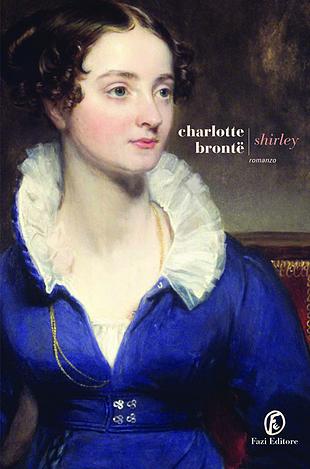Last November Fazi Editore published a new eidtion of Shirley (Italian Edition) by Charlotte Brontë, and kindly gave us the chance to read the novel a few days before it was available in bookstores. There were no recent Italian editions available till this moment, so we were very curious to read this book. Shirley is a quite long novel- almost 700 pages in the Italian version, and it is definetely not one of those books you can’t put down. In our modest opinion it starts very slowly, and honestly, it keeps a very slow pace till the end. In other words, we expected the direct thread from page to stomach, as in Jane Eyre, we were waiting for that irresistible attraction towards the book, the kind you feel when you can’t stop reading. Well, nothing of this happened while reading Shirley. And you know what? It’s fine! Why keep looking for old feelings in a new reading?

Shirley is often considered a “social novel”, and actually, it depicts a very interesting historic and social context, especially for curious readers and for those who love England. Since from the very first lines, in fact, we can see with our own eyes what was the situation in Yorkshire at the beginning of the Nineteenth Century- the Country was facing the results of the Industrial Depression, Luddism, and Napoleonic Wars. Besides, another central theme of the novel is women’s role in Victorian Society: as a matter of fact, conventionally, women were mostly considered just as wives. Well, it’s exactly here that you can see a novel like Shirley shining bright.
Oh, Charlotte uses such words for her heroines! These young women just want to be indipendent, and ask to work and learn, and to be treated like equals, since everyone of us is first of all a person, no matter if you are wearing a skirt or some trousers. The two main characters of the novel (yes, they are two! Even if we can’t guess it from the title, based entirely upon one of them,) are characterized by intellect and sensitivity, ambition and humility, strenght and will of succeeding with dignity. It’s a call for women’s indipendence which sounds so modern to our ears, that we can barely believe it comes from Charlotte, a woman who lived almost two hundred years ago.
So, this is the social background in which the whole story takes place. The main characters are Shirley, orphaned heiress to a fortune, Caroline, her best friend and niece of Reverend Helstone; Robert Moore, an industrialist and his brother Louise, a private tutor. The whole story is about business and love.
This is a good book for a standard reader, but it is a real gift for those readers who love the Brontë sisters. As a matter of fact, it is a secret window on their lives! The novel is rich in autobiographic events, you can easily spot references to real people, kindly turned into fictional characters; there are plenty of facts that really happened in their family life.
It is not so difficult to spot, at the core of the fictional narrative, some solid roots which come directly from the true life of the author: the emotion of (lost?) maternity, a true friendship between two young women who are almost sisters, the life at the rectory, the deep love for the dogs of the house and for books and culture, death always hiding there… again, it’s a kind of family portrait.
So, during this slow reading once more it struck us how these authors, and in this specific case Charlotte, of course, can always, somehow, get to the core of our feelings and touch something inside us, making us wish to read more, and more, and more.
Serena





